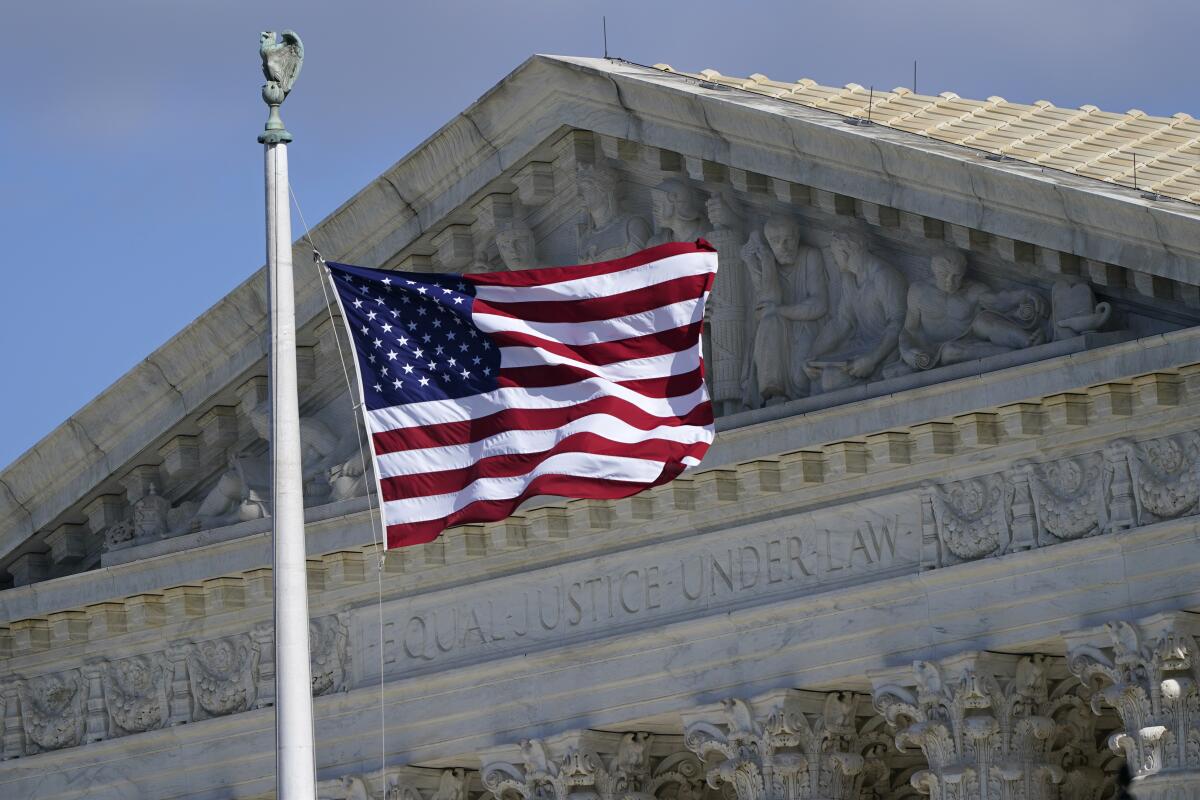Apodaca: High court’s free speech ruling leaves room for student discipline

The U.S. Supreme Court’s recent decision regarding a school’s punishment of a student for off-campus speech was a ruling that administrators across the country had looked to for some added clarity regarding how far their responsibilities extend in this complex age of digital media dominance.
The case involved a Pennsylvania high school student who was suspended from the junior varsity cheerleading squad for posting a profanity-laced rant on Snapchat after she didn’t get a spot on the varsity team.
It was significant in part because it was the high court’s first ruling on student free speech since 1969. In that earlier case the court ruled that an Iowa school could not prohibit students from wearing black arm bands to protest the Vietnam War.
Students’ language must pose a “substantial” disruption to the learning environment for a school to take disciplinary action, it said at the time.
But much has changed since then.
In the past, schools were held responsible for students “door to door,” which was defined as the time kids left home to attend school or school-related functions, until they returned home. The emergence and proliferation of social media muddied that narrative by fundamentally altering the way students communicate.
Social media posts can be entered anywhere, and they follow students around all day, in and out of school. This altered landscape has posed enormous challenges for schools trying to determine whether, and how, to intervene when students make problematic posts that are widely shared.
Like the earlier Supreme Court ruling, last month’s 8-1 decision erred on the side of free speech. The court ruled in the student’s favor, saying that schools cannot punish a student for off-campus speech unless it “materially disrupts classwork or involved substantial disorder or invasion of the rights of others.”
“Perhaps Bodie was exhibiting his version of the anxiety I also feel now that California has fully ‘reopened,’” writes Daily Pilot columnist Patrice Apodaca.
As Justice Stephen Breyer, writing for the majority, so aptly put it, “Sometimes it is necessary to protect the superfluous in order to preserve the necessary.”
He laid out three general principles for student free-speech protections and the limitations of schools. The first is that schools rarely stand “in loco parentis” — in place of parents or legal guardians — when it comes to the monitoring of students’ off-campus speech.
Second, he wrote, taken together a student’s on-campus and off-campus speech would encompass all of a student’s speech 24 hours a day. Therefore, “courts must be more skeptical of a school’s efforts to regulate off-campus speech, for doing so may mean the student cannot engage in that kind of speech at all.”
And third, he emphasized that schools should seek to protect student speech, even if unpopular, “because America’s public schools are the nurseries of democracy.”
So the decision provided some new clarity on where the boundaries exist, but not so much that schools won’t still have some difficult calls to make.
“I think certain people wanted a bright line, but I don’t think that’s what they got out of this decision,” said Dr. Phil D’Agostino, the director of Student and Community Services at Newport-Mesa Unified School District.
“While it certainly limits schools and school districts’ ability to discipline students for speech that occurs off campus, it didn’t negate the broader rule. They left the door open to discipline students for off-campus speech if it relates to bullying and threats.”
While that might seem to be a reasonable standard, the challenge lies in determining what kind of speech and behavior falls into those categories. When is the line crossed from speech that some might consider rude or objectionable into cyber bullying or hate speech?
And if a school district decides that it must respond in some fashion, what exactly should that response encompass?
Fortunately, here in California we have a better understanding thanks to a years-long trend of downplaying old-school disciplinary measures and instead favoring concepts such as restorative justice that emphasize prevention and intervention strategies.
In keeping with that trend, since last year the state has banned suspensions in grades K-8 for “willful defiance,” a category of speech and behavior that had been widely criticized for being vague and overused.
In Newport-Mesa, “we apply a restorative approach,” D’Agostino said.
The words “discipline” and “disciple” derive from the same root word, he noted. The discipline of students “should be a teachable moment and not just punitive. We want them to grow as human beings.”
A high-profile example of that strategy emerged in 2019 after a group of students from Newport Harbor, Costa Mesa and Estancia high schools were seen in a social media post giving a Nazi salute in front of red plastic cups arranged in the shape of a swastika.
The incident, which generated news reports across the country, led to the creation of a districtwide human relations task force, with the goal of promoting a more positive and inclusive environment and improving curriculum.
The district also held community meetings, and brought in Holocaust survivor Eva Schloss, Anne Frank’s stepsister, to speak to students about her experiences.
Student discipline continues be a tricky business plagued by blurred lines, changing norms and the increasing prevalence of social media.
Nonetheless, the decision to protect free speech and the growing embrace of restorative justice are moves in the right direction.
All the latest on Orange County from Orange County.
Get our free TimesOC newsletter.
You may occasionally receive promotional content from the Daily Pilot.




